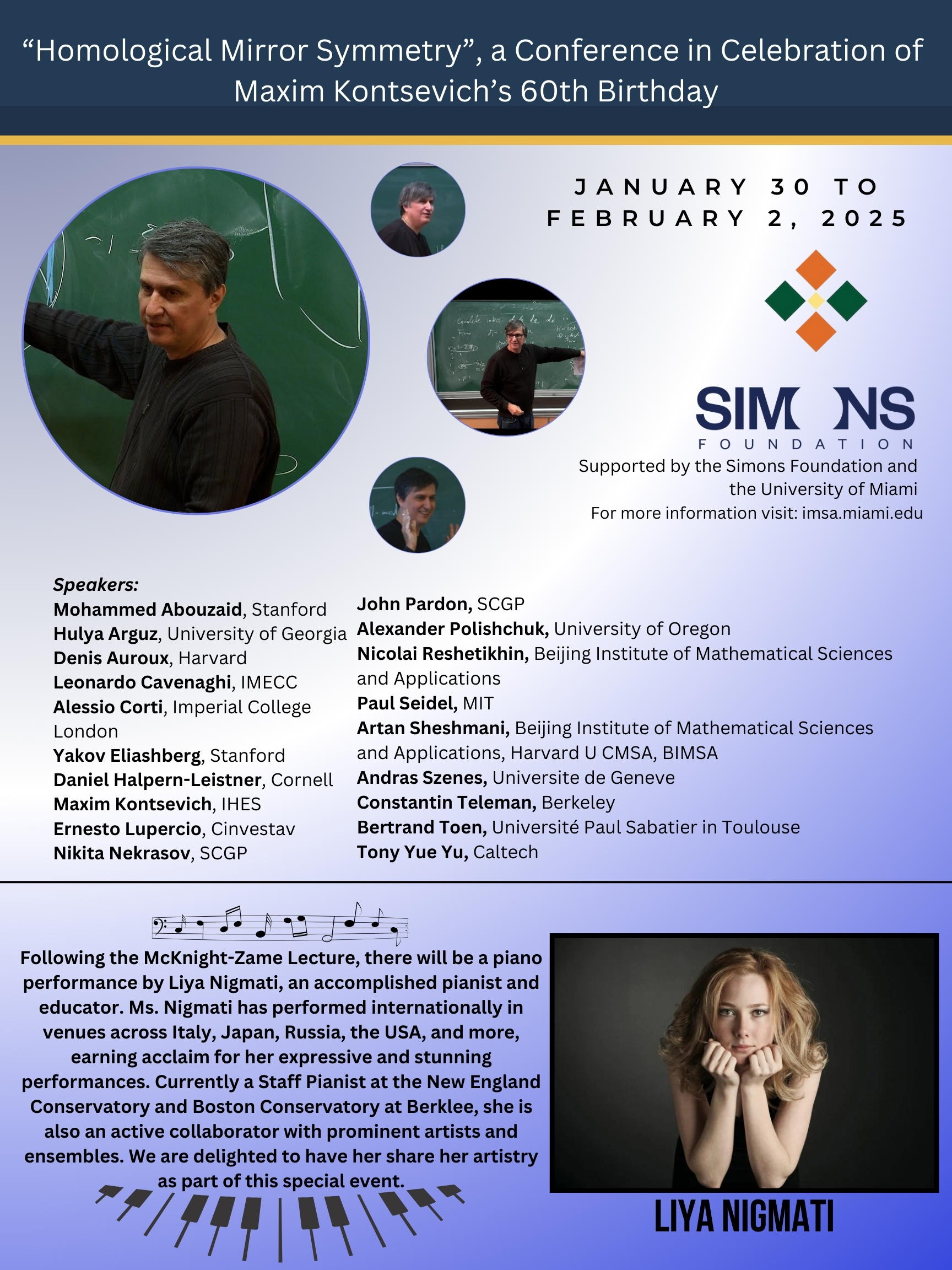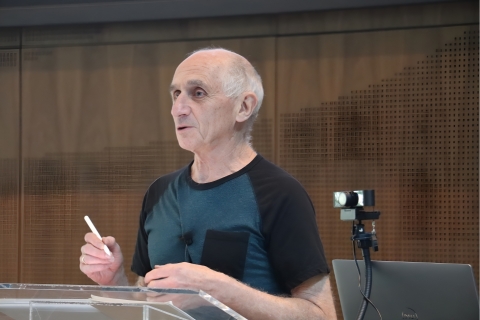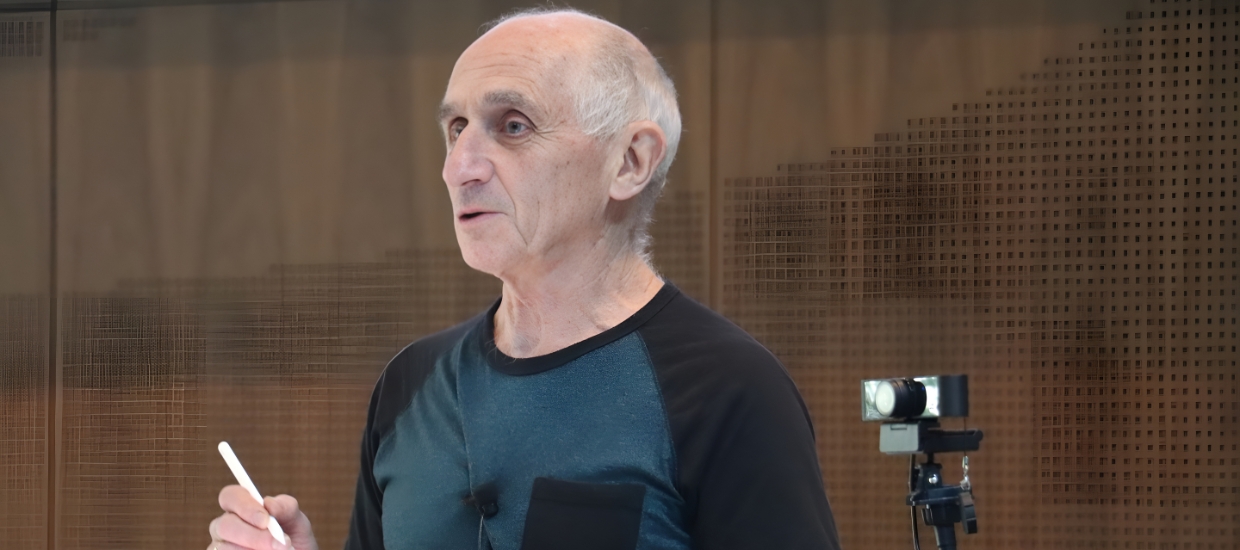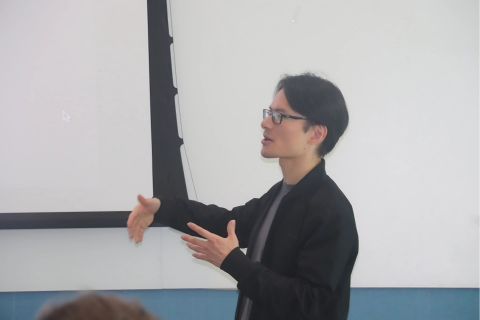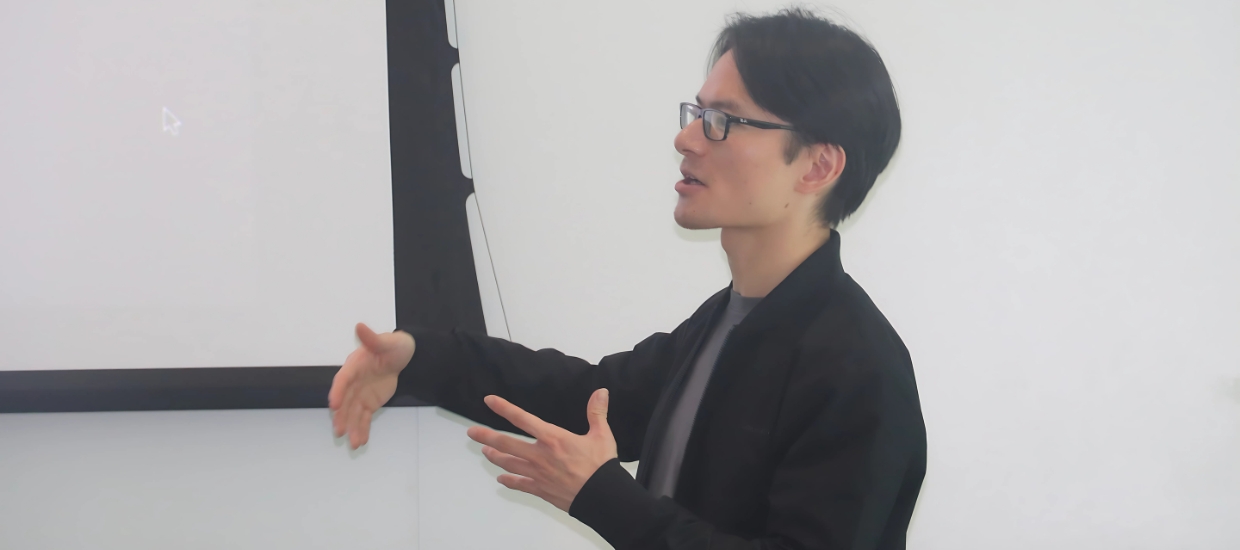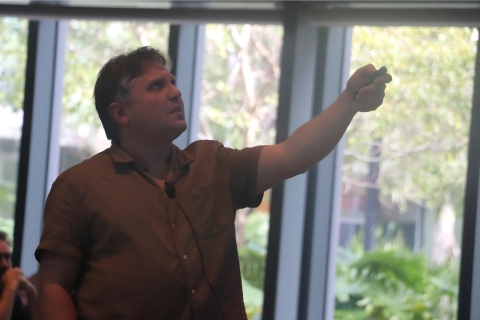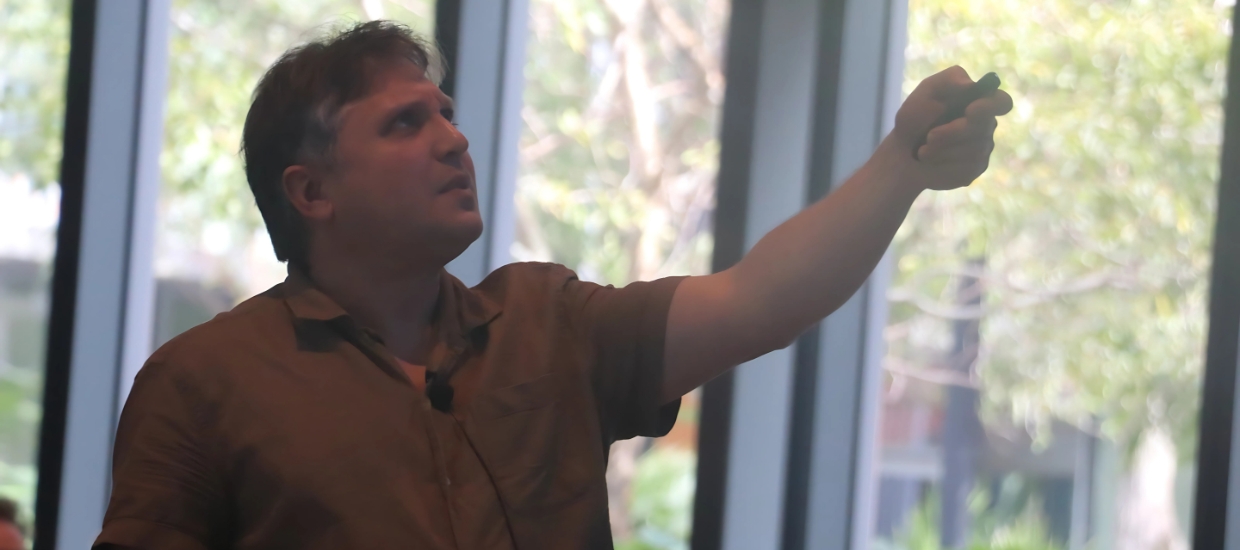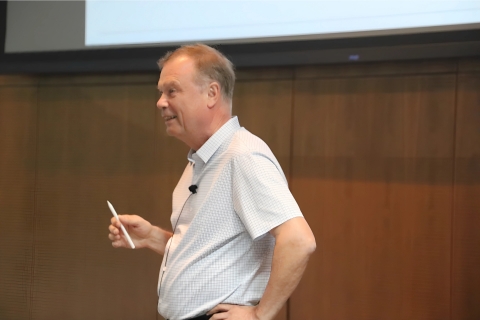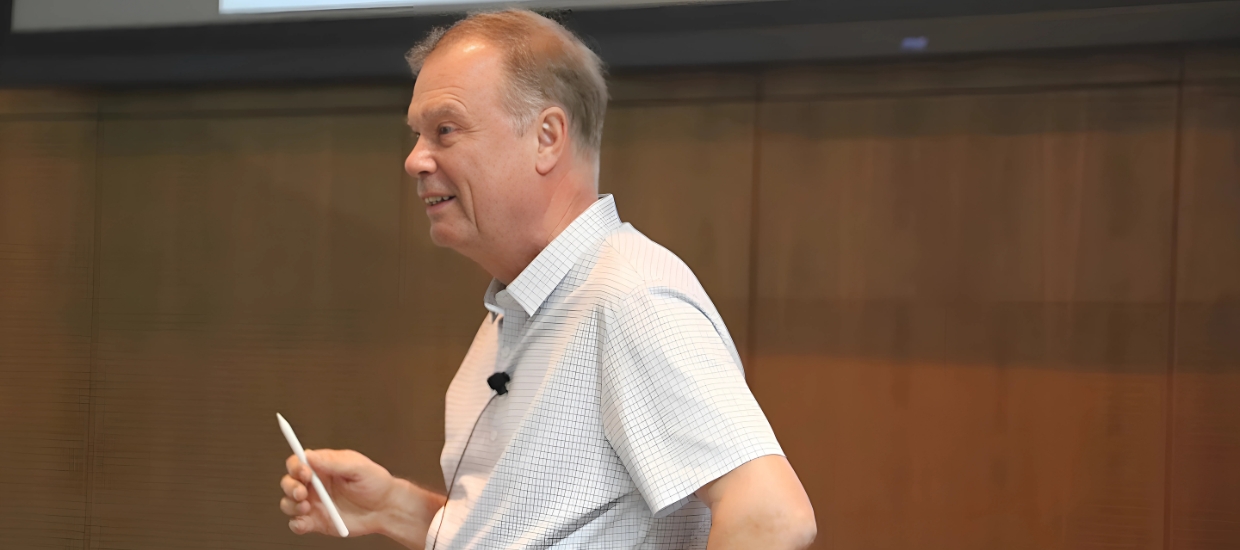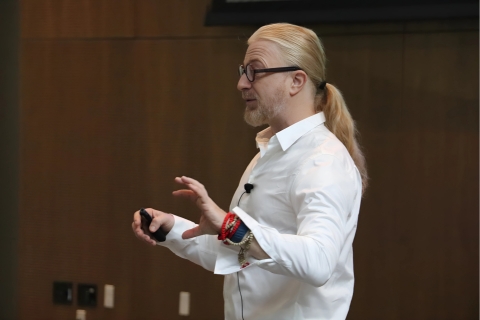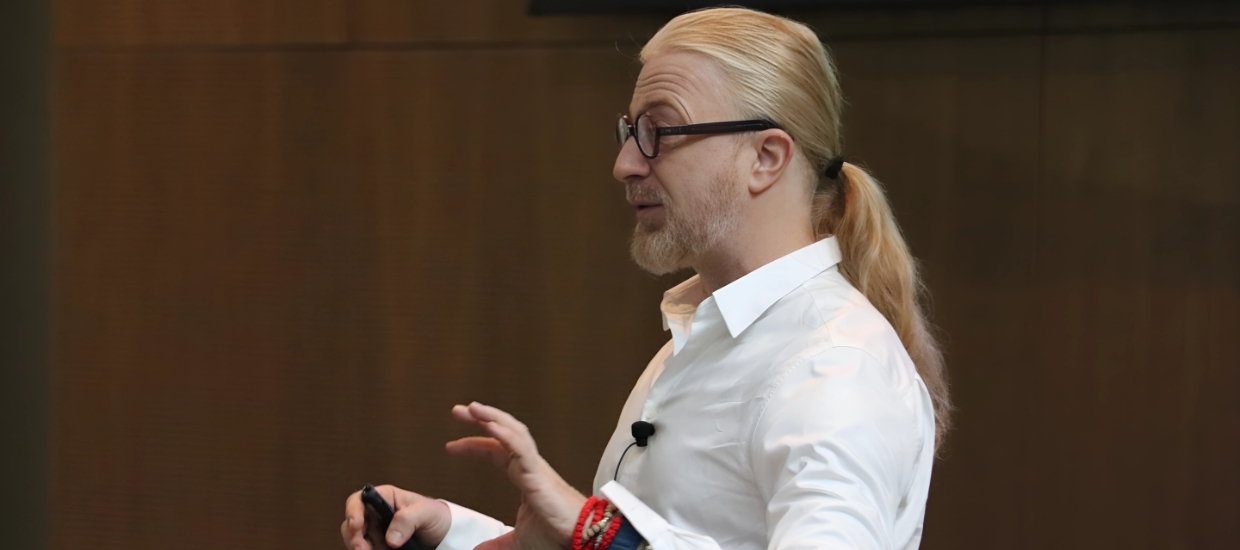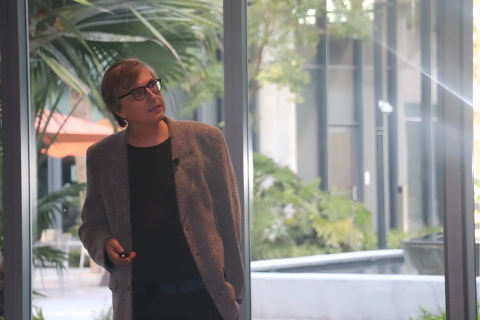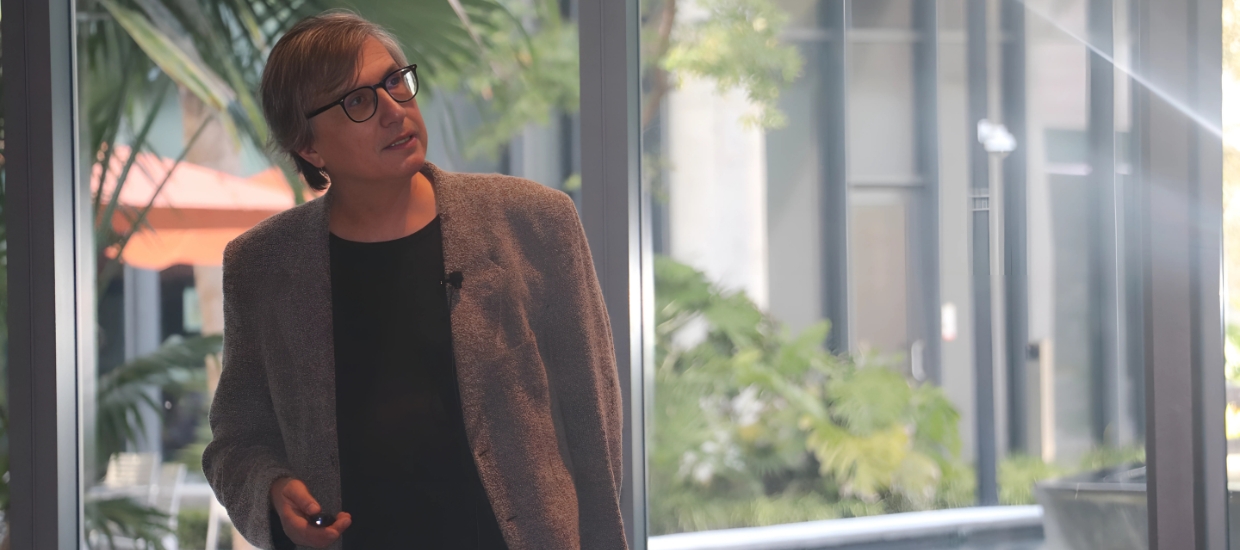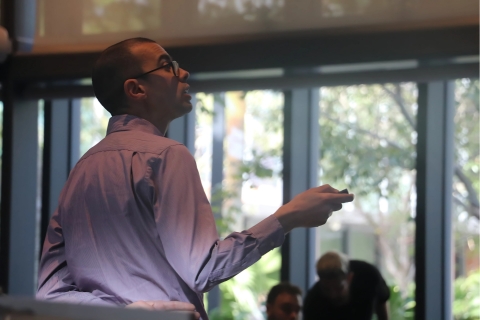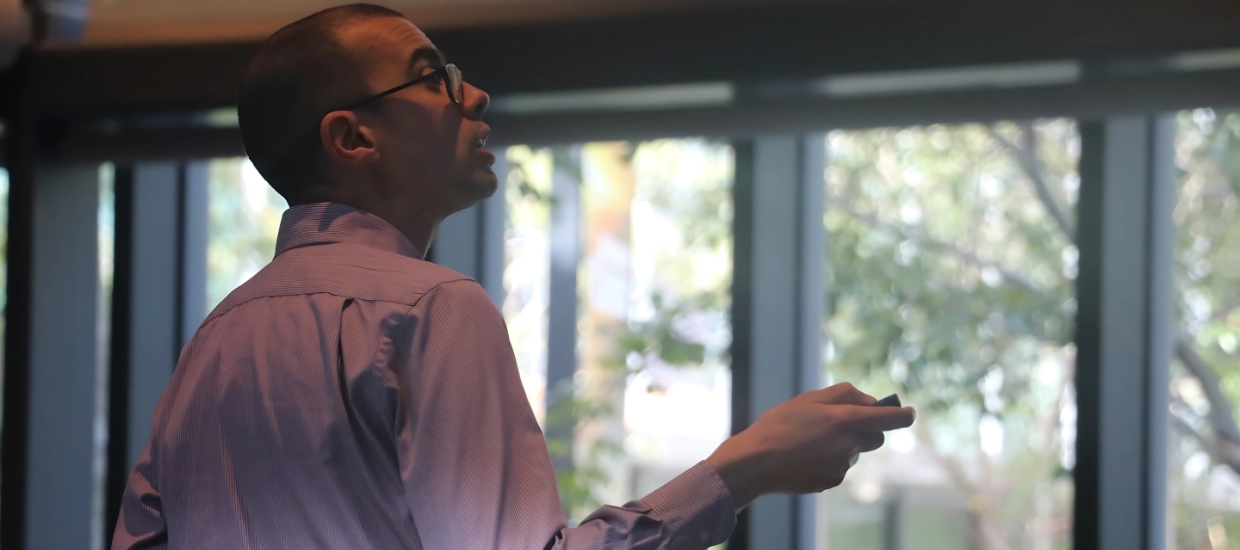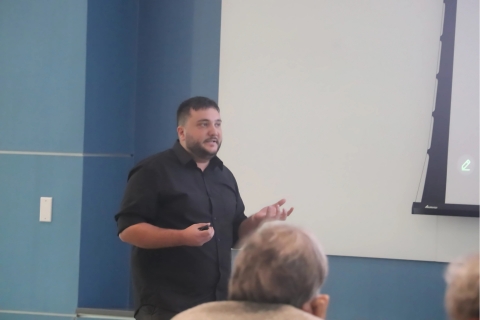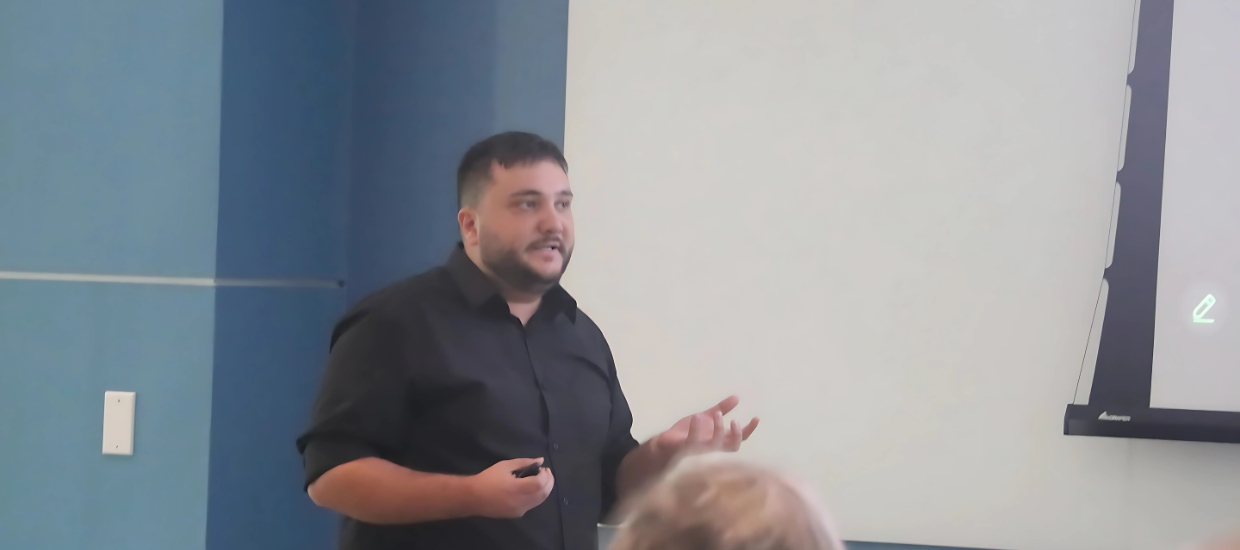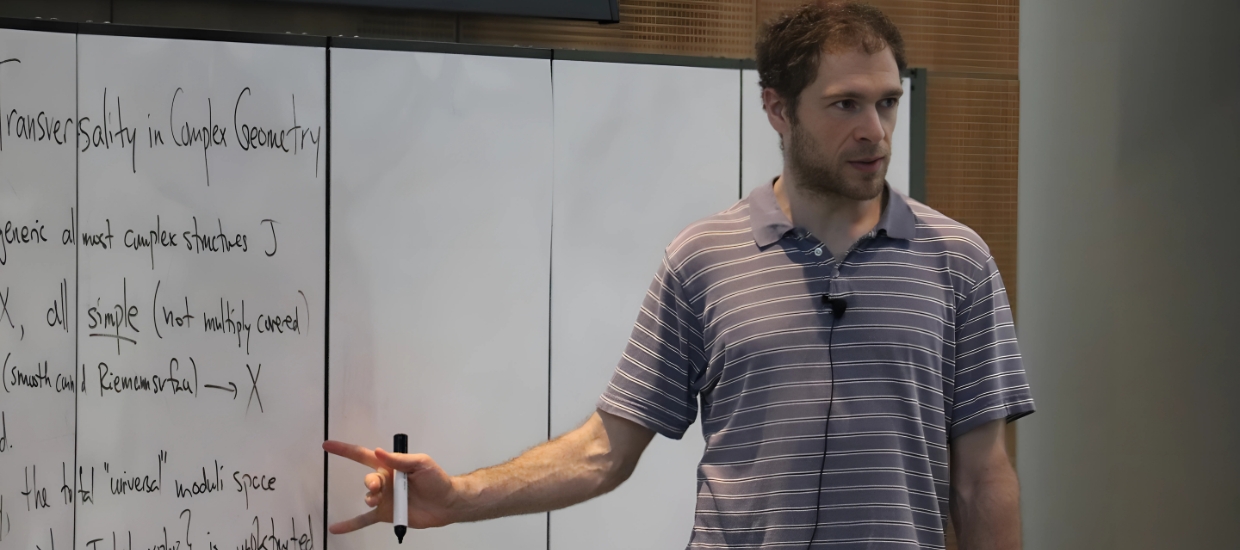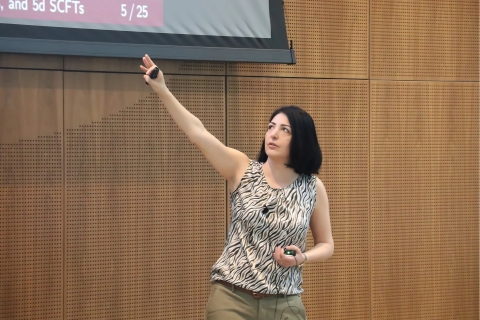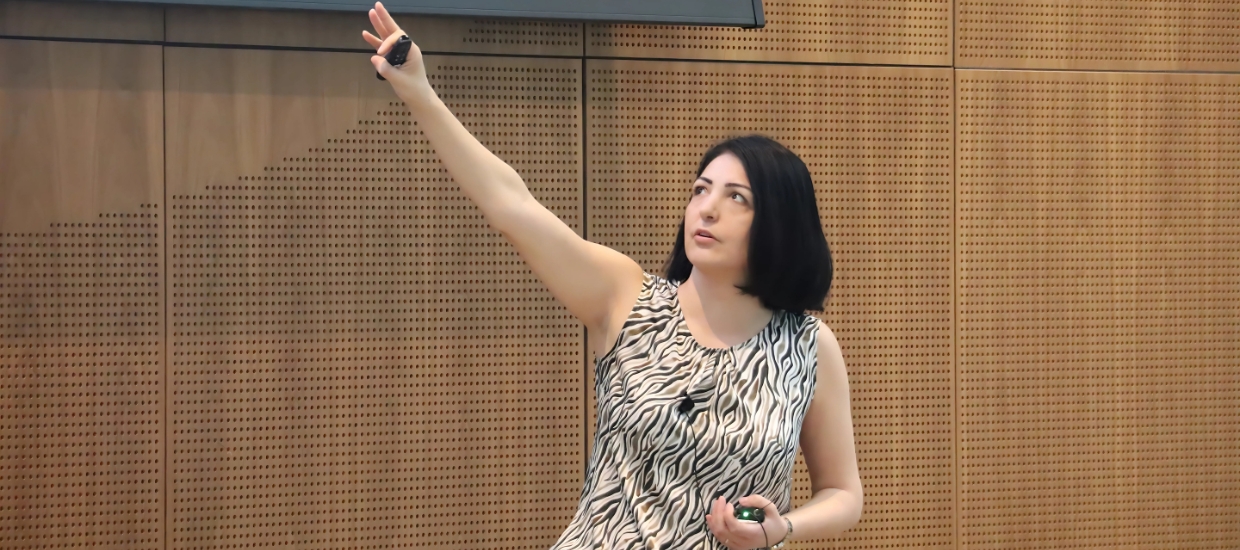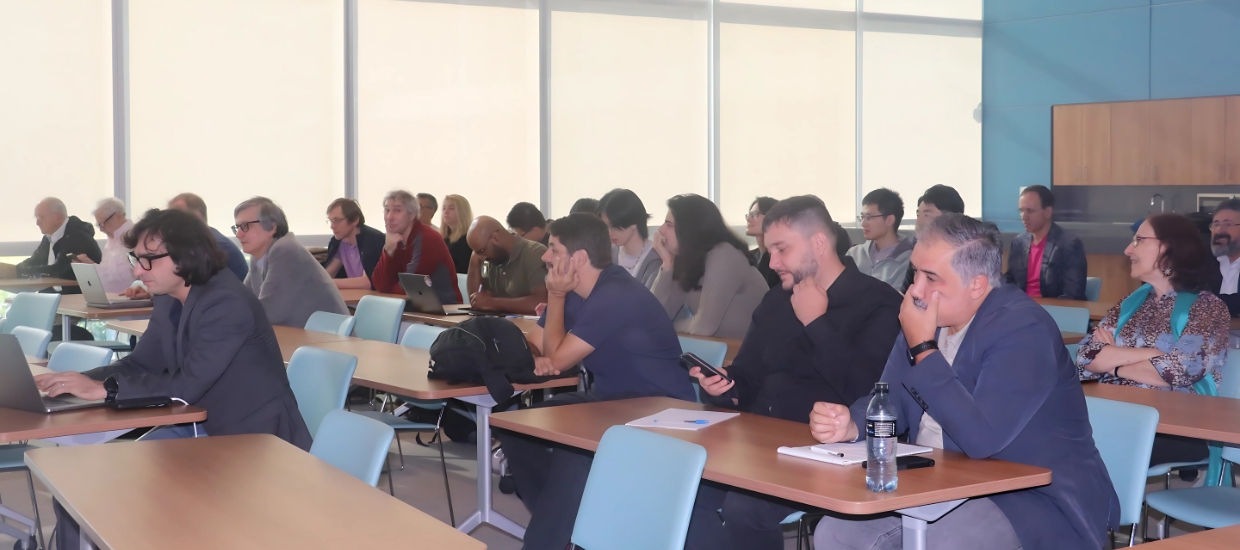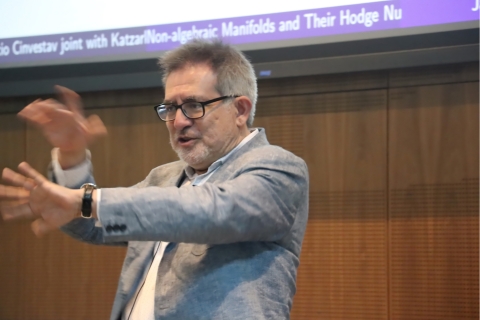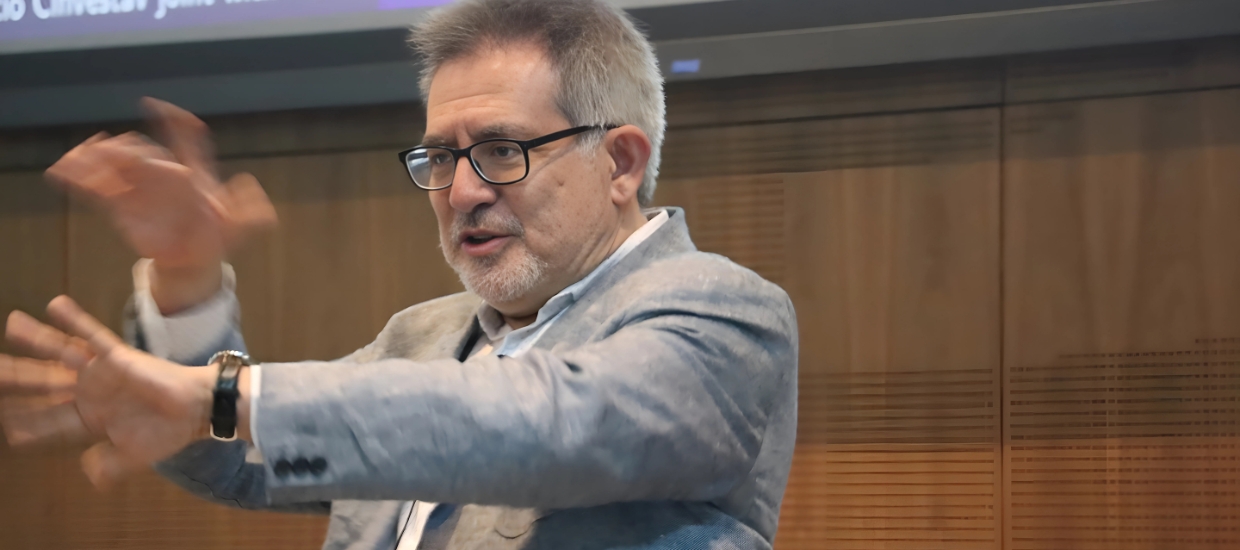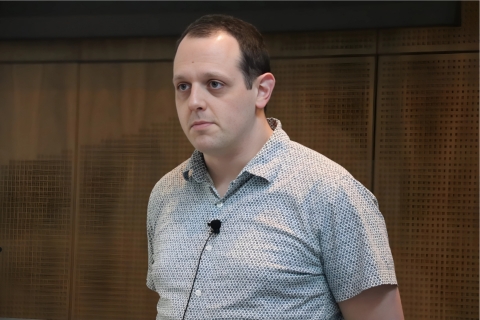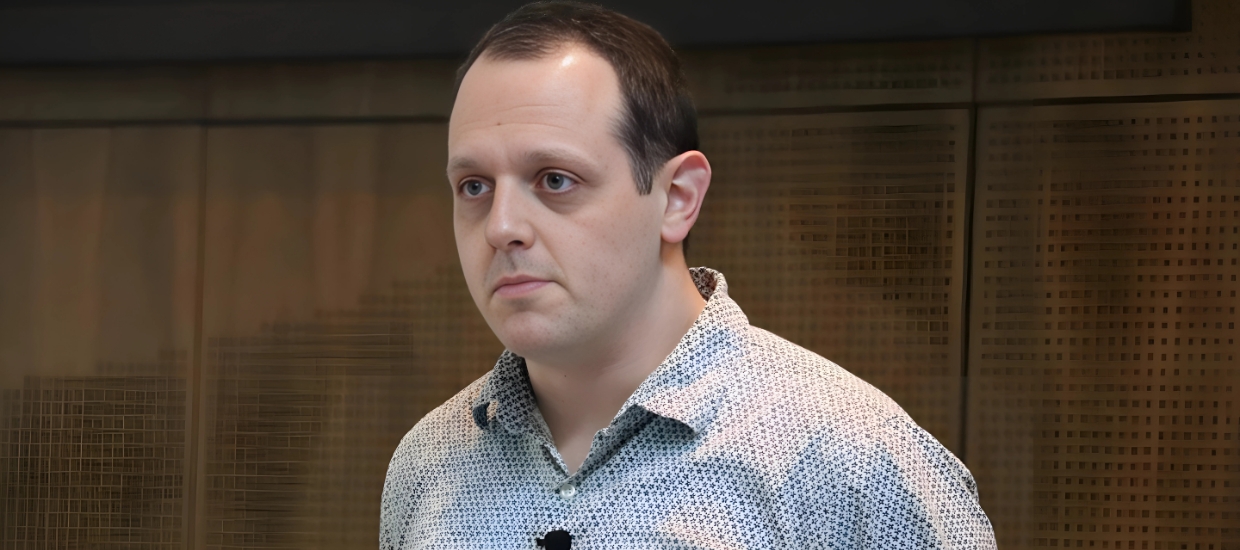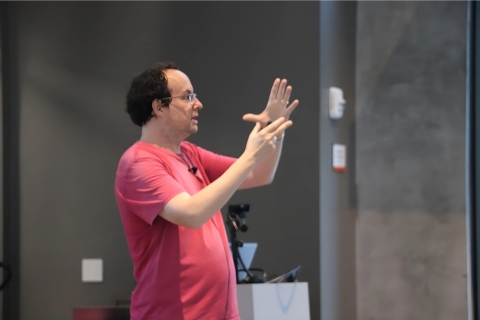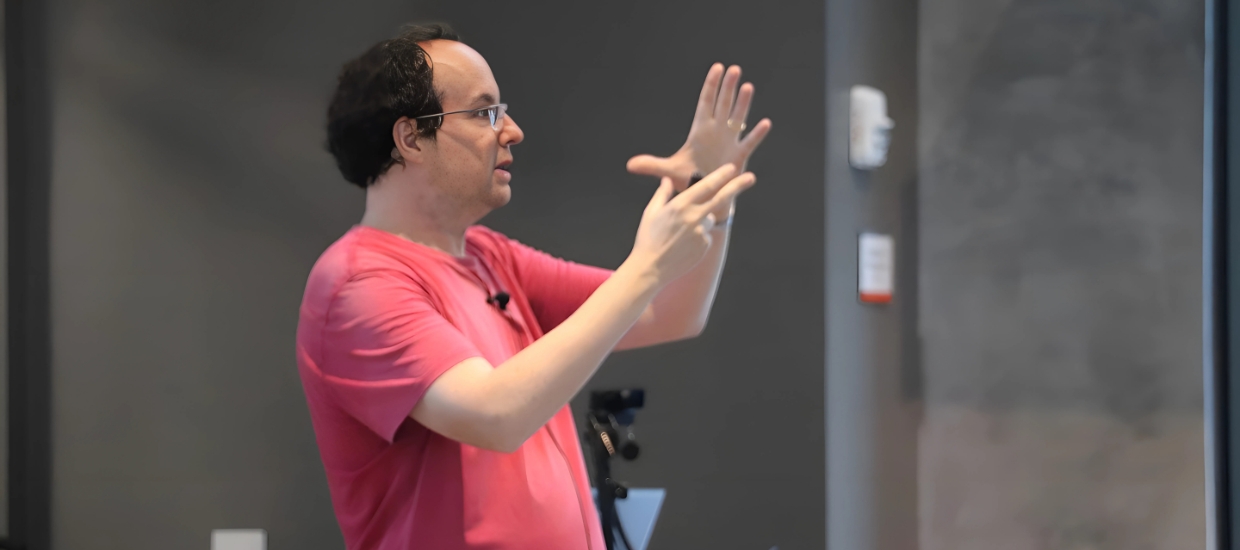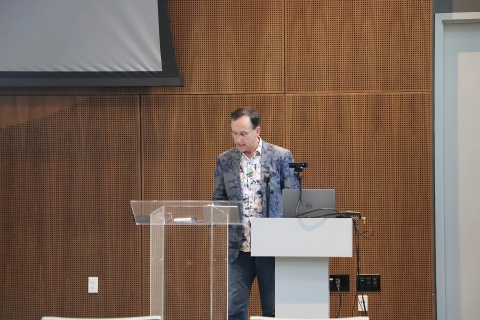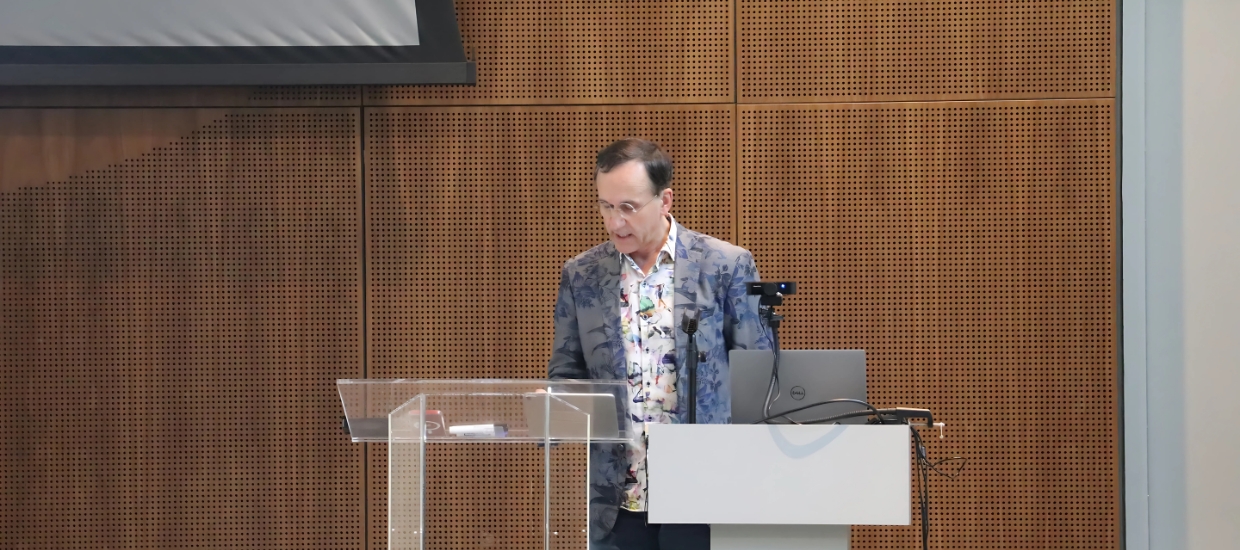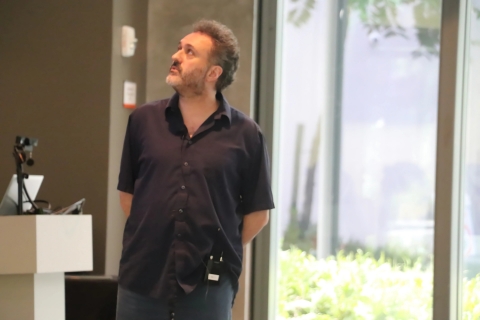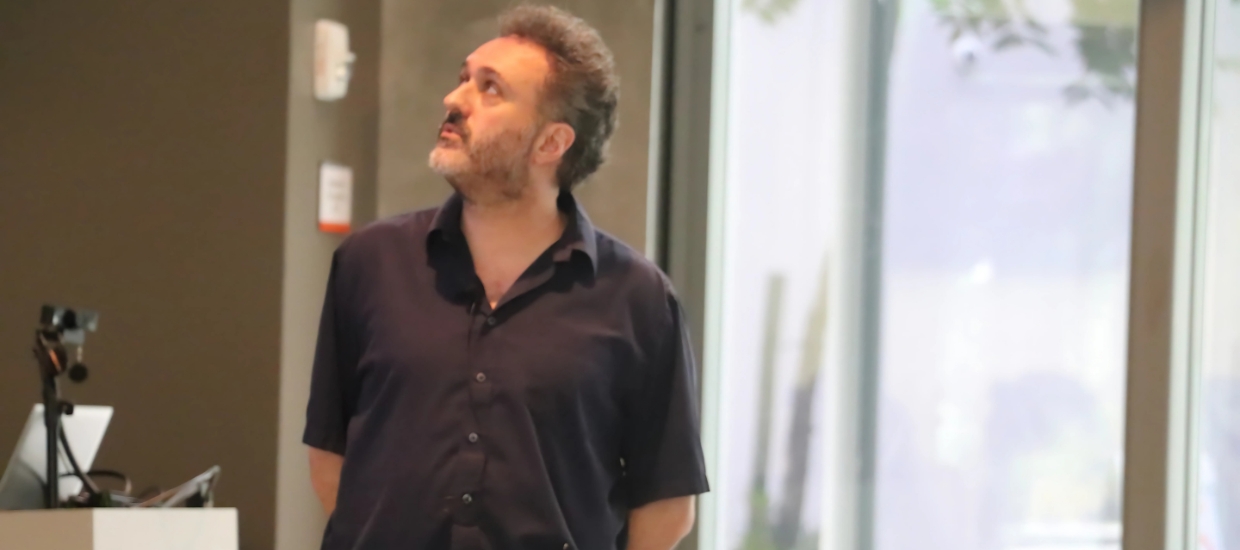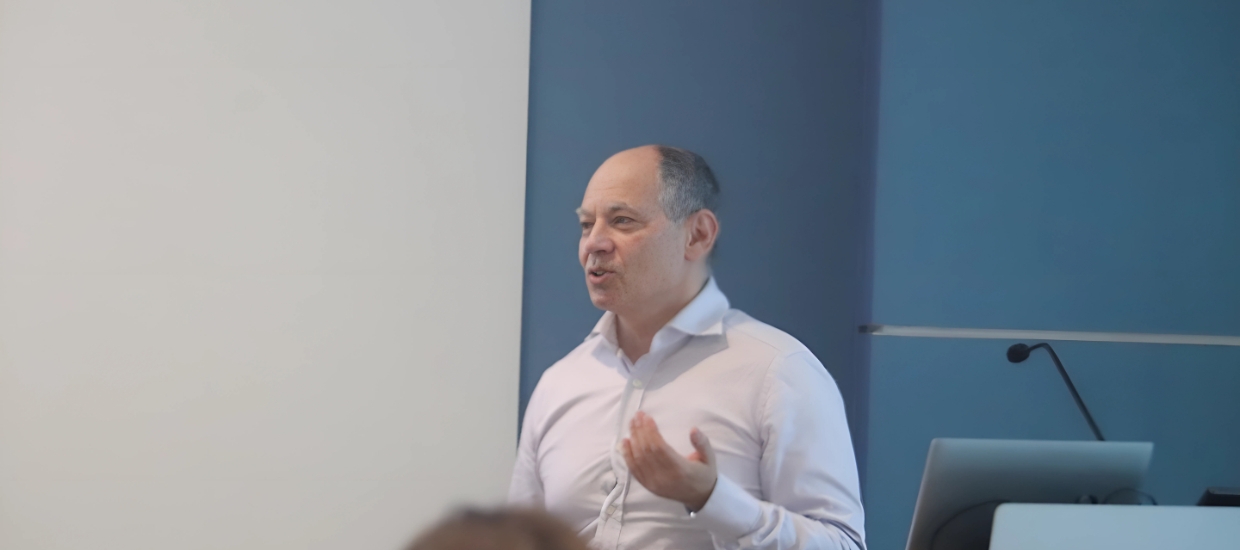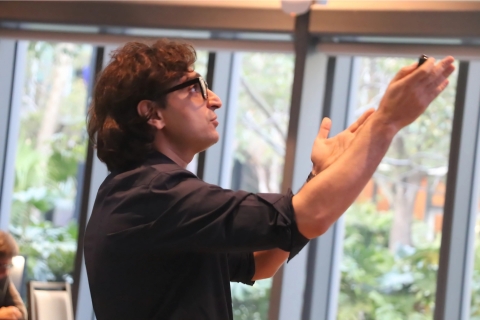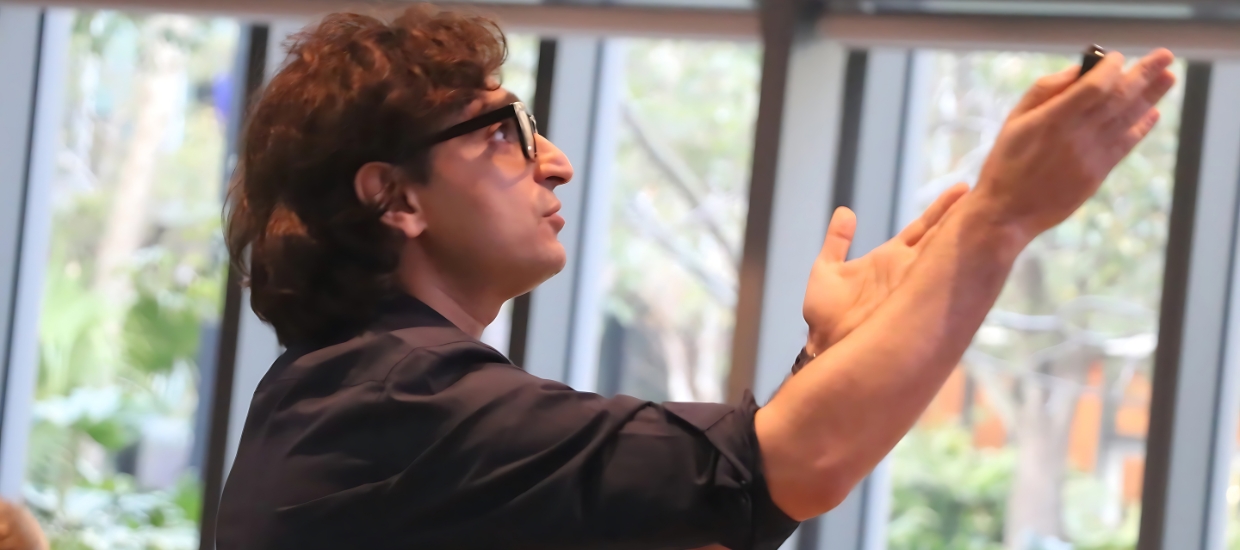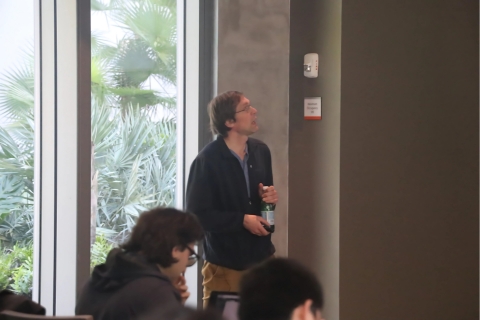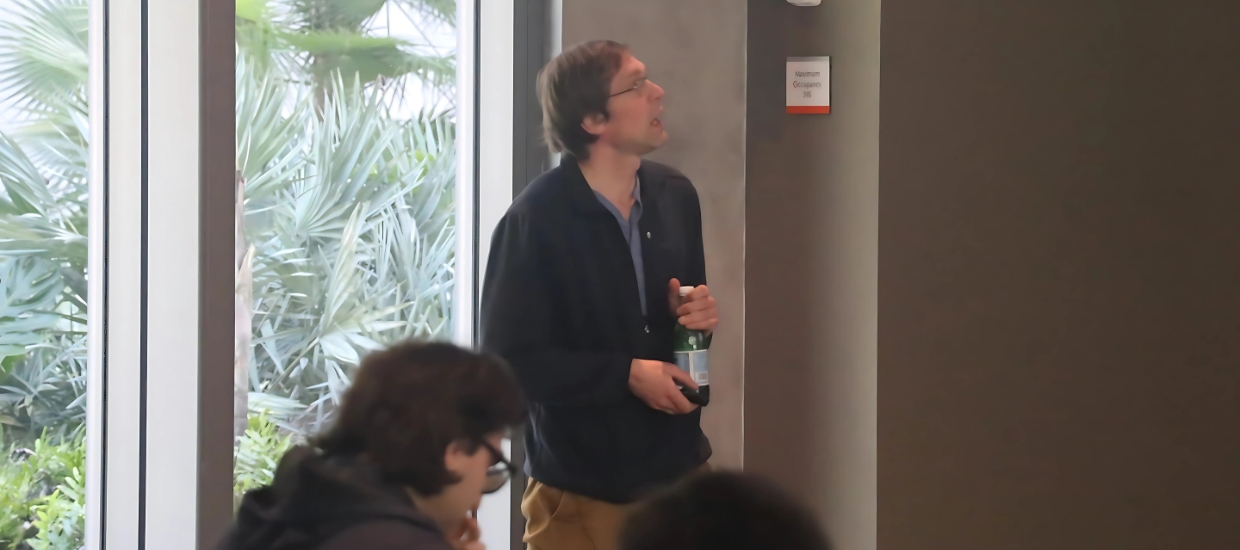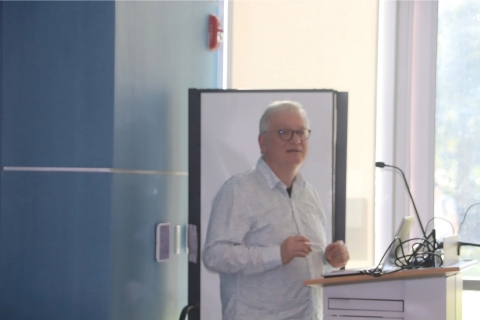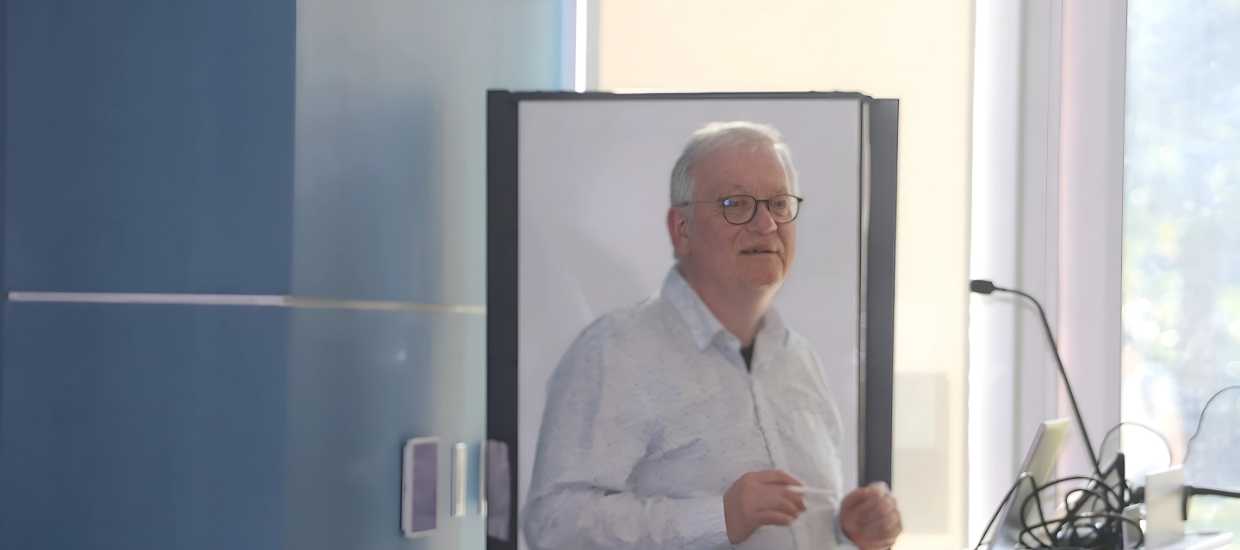Dates: January 30-February 2, 2025
Location: Lakeside Village, 1280 Stanford Dr, Coral Gables, FL 33146 & Frost Institute for Chemistry and Molecular Science, 1201 Memorial Dr, Coral Gables, FL 33146
Live Video Available via Zoom
To register, please click here.
Schedule
Thursday, January 30, 2025, Frost Institute for Chemistry and Molecular Science
| 9:00am |
Opening
|
| 9:30am |
Alessio Corti, Imperial College London: Smoothing toric Fano 3-folds Video
I will talk about work in progress with Helge Ruddat aim to prove an optimal criterion for deforming a toric Fano 3-fold to a Fano 3-fold with terminal quotient singularities.
|
| 11:00am |
Tony Yue Yu, CalTech Video
F-bundle is a formal/non-archimedean version of variation of nc-Hodge structures which plays a crucial role in the theory of atoms as birational invariants from Gromov-Witten theory. I will explain the spectral decomposition theorem for F-bundles according to the generalized eigenspaces of the Euler vector field action. The proof relies on solving systems of partial differential equations recursively in terms of power series, and on estimating the size of the coefficients for non-archimedean convergence. The same technique allows us to establish the existence and uniqueness of the extension of framing for logarithmic F-bundles. As an application, we prove the uniqueness of the decomposition map for the A-model F-bundle (hence quantum D-module and quantum cohomology) associated to a projective bundle, as well as to a blowup of an algebraic variety. This complements the existence results by Iritani-Koto and Iritani. Joint with Katzarkov, Kontsevich and Pantev, as well as with my students Hinault, C. Zhang and S. Zhang.
|
| 2:30pm |
Leonardo Cavenaghi, IMECC & University of Miami: Atoms meet symbols Video
In this talk, we add the needed concepts to the "Theory of Atoms" recently introduced by Katzarkov-Kontsevich-Pantev-Yu and show how one can combine it with the "symbols" introduced by Tschinkel-Kontsevich in 2019 in the frame of $G$-equivariant birational geometry, to obtain a new $\mathbb Z$-module that retains $G$-equivariant birational geometric information. We derive certain $\mathbb Z$-values $G$-equivariant birational invariants from that.
This is a joint work with L. Grama, L. Katzarkov, and M. Kontsevich.
|
| 4:00pm |
Andras Szenes, University of Geneva: Non-commutative deformation of the moduli space of flat connections on Riemann surfaces Video
Formal deformations of functions on manifolds were introduced in the 70s as a mathematical approach to quantum mechanics. Later, in the mid-90s Fedosov constructed this structure on symplectic manifolds and linked it to topological invariants. In his seminal 1997 paper, Maxim Kontsevich revolutionized the subject, placing it in the framework of higher algebra and modern quantum physics. These developments motivated my work with Philippe Roche on the deformation of spaces of flat connections on Riemann surfaces.
I will describe the philosophy behind this work and some recent developments.
|
| 5:30pm |
Annual McKnight-Zame Lecture: Nicolai Reshetikhin, Tsinghua University: On the Ising Model in Statistical Mechanics Video
The Ising model is probably one of the most famous models in stationary statistical mechanics. It describes the magnetization and the corresponding phase transition. A remarkable feature of the two-dimensional model is that it admits an exact (in a certain sense) solution. This lecture is an overview of the two-dimensional model and some of its features such as Dobrushin-Kotecky- Shlosman droplets, scaling properties of correlation functions, conformal invariance and others.
|
Friday, January 31, 2025
| 9:30am |
Maxim Kontsevich, IHES: Non-perturbative deformation quantization Video
By formality theorem, on any Poisson variety one has a canonical sheaf of algebroids over $\mathbb C[[\hbar]]$, and hence a formal deformation of the category of perfect complexes. I propose a new conjecture which says that for compact manifolds of K\"{a}hler type there is a canonical global category defined for any $\hbar\in \mathbb C$. Also, I discuss a companion conjecture about global categories of "compactly supported" objects on open symplectic leaves.
|
| 10:45am |
Paul Seidel, MIT: The quantum connection and its mod p reductions Video
Over the last couple of years, there has been progress in the structure of the quantum connection, particularly on Fano manifolds. I will discuss some of this progress, and the role that Steenrod-type quantum operations play in it.
|
| 12:00pm |
Alexander Polishchuk, University of Oregon: Schwartz spaces associated with the stack of rank 2 bundles on a curve over a local field Video
This talk is based on joint works with Alexander Braverman and David Kazhdan. The motivation for this project comes from the Analytic Langlands program, which is an analog of the usual Langlands correspondence involving a curve over a local field. We study the natural Schwartz space of half-densities associated with the stack of rank 2 bundles on such a curve. The long term goal is to understand the action of Hecke operators on this space. For this it is useful to understand the behavior of elements of this space near stable bundles. Our first result is that a Schwartz half-density on the stack of rank 2 bundles defines a smooth (locally constant in the non-archimedean case) half-density on the open subscheme of very stable bundles, i.e., bundles without nonzero nilpotent Higgs fields. We then formulate a set of algebro-geometric conjectures (that we can check for low genus) that imply boundedness of these half-densities near stable bundles.
|
| 2:30pm |
Mohammed Abouzaid, Stanford University: Bordism and resolution of singularities Video
The geometric input of Gromov-Witten theory are moduli spaces of (pseudo)-holomorphic curves with target a (closed) symplectic manifold. It has long been known that these are not in general manifolds, because of the presence of symmetries, and that they are not in general orbifolds either, since symmetries can obstruct transversality. One model for the structure they carry is that of derived orbifolds. This motivates the study of the bordism groups of stably complex derived orbifolds as a universal receptacle for Gromov-Witten invariants in symplectic topology. I will describe joint work with Shaoyun Bai, which uses the functoriality of the resolution of singularities algorithm for complex algebraic varieties, together with refinements of Fukaya and Ono's old idea of normally complex perturbations, to split the inclusion of the bordism group of stably complex manifolds (unitary bordism) into this mysterious group.
|
| 3:45pm |
Nicolai Reshetikhin, Tsinghua University: Invariants of tangles with flat connections in the complement Video
The construction of invariants of tangles with a flat connection in the complement based on properties of quantum groups at roots of unity (De Concini-Kac version with large center) was proposed in a joint work with R. Kashaev (2005). It is related to homotopy quantum field theory by V. Turaev. In this talk, I will recall the construction of these invariants, and will explain why Poisson structures on the center of quantum groups at a root of unity that appear in this construction are natural in terms of the geometry of flat connections in the complement to a tangle.
|
| 5:00pm |
Ernesto Lupercio, CINVESTAV: Extending Hodge Polynomials to Non-Kähler Geometry Video
Hodge polynomials, traditionally tied to algebraic varieties, reveal intriguing behaviors in non-Kähler settings. In this talk, I will present joint work with Ludmil Katzarkov, Kyoung-Seog Lee, and Laurent Meersseman, focusing on LVMB manifolds as pluri-logarithmic transforms. These constructions provide a framework to study motivic properties in a broader context, shedding light on the role of zero divisors in the motivic ring of analytic spaces.
|
Saturday, February 1, 2025
| 9:30am |
Denis Auroux, Harvard University: On the geometry of mirror symmetry for non-Fano log Calabi-Yau pairs Video
While the SYZ approach to mirror symmetry can be applied to a wide range of log Calabi-Yau pairs (X,D) (where D is an effective normal crossings anticanonical divisor in X), the case where D contains exceptional rational curves leads to various unusual features. We will start by discussing new results on Hirzebruch surfaces (work in progress of Honghao Jing), before moving on to a 4-dimensional example where stable discs of negative Maslov index cause the wall-crossing corrections to the mirror geometry to be inconsistent. We will also outline a Morse-theoretic approach to constructing the corrected mirror from the geometry of treed holomorphic discs with boundary on the Lagrangian torus fibers of the SYZ fibration. (Various parts of this are work in progress, including PhD thesis work of Keeley Hoek).
|
| 11:00am |
Bertrand Toën, CNRS, Université de Toulouse: Exponential homotopy theory Video
In this talk I will present the notion of exponential homotopy type associated to an algebraic variety X and explain its relations with usual homotopy theory and the theory of singularities of potentials on X. On the way, I will present a new notion of "strictly symmetric" monoidal infinity-category which is necessary for the construction and explain how it fills a gap in the literature on Tannakian duality for infinity-categories.
|
| 2:30pm |
Daniel Halpern-Leisnter, Cornell University: Moduli spaces of semistable objects in dg-categories Video
One reason algebraic geometers study Bridgeland stability conditions is to construct moduli spaces of complexes of coherent sheaves, and to study wall-crossing phenomena for these moduli spaces. Typically the constructions of these moduli spaces are case specific, using moduli spaces of semistable sheaves previously constructed with geometric invariant theory. Recently, Alekos Robotis and I have conjectured the existence of a certain mass-Hom inequality for stability conditions on general smooth and proper dg-categories and showed that it implies the existence of compact moduli spaces of semistable objects, intrinsically and directly. I will discuss these results and their implications for symplectic topology: It provides an approach to upgrading homological mirror symmetry from a “conjectural conjecture” to simply a “conjecture.”
|
| 3:45pm |
Yakov Eliashberg, Stanford University: Symplectic filings of contact manifolds and contact convexity Video
One of corollaries of recent progress in contact convexity by Honda-Huang and Pancholi, Chaidez and the speaker, Is existence of unexpectedly large number of Stein fillings of contact manifolds. In the talk I will review the constructions and discuss open problems.
|
| 5:00pm |
Artan Sheshmani, BIMSA and Harvard - MIT IAiFi: Tyurin degenerations, Relative Lagrangian foliations and categorification of DT invariants
We discuss construction of a derived Lagrangian intersection theory of moduli spaces of perfect complexes, with support on divisors on compact Calabi Yau threefolds. Our goal is to compute deformation invariants associated to a fixed linear system of divisors in CY3. We apply a Tyurin degeneration of the CY3 into a normal-crossing singular variety composed of Fano threefolds meeting along their anti-canonical divisor. We show that the moduli space over the Fano 4 fold given by total space of degeneration family satisfies a relative Lagrangian foliation structure which leads to realizing the moduli space as derived critical locus of a global (-1)-shifted potential function. We construct a flat Gauss-Manin connection to relate the periodic cyclic homology induced by matrix factorization category of such function to the derived Lagrangian intersection of the corresponding “Fano moduli spaces”. The latter provides one with categorification of DT invariants over the special fiber (of degenerating family). The alternating sum of dimensions of the categorical DT invariants of the special fiber induces numerical DT invariants. If there is time, we show how in terms of “non-derived” virtual intersection theory, these numerical DT invariants relate to counts of D4-D2-D0 branes which are expected to have modularity property by the S-duality conjecture. This talk is based on joint work with Ludmil Katzarkov, Maxim Kontsevich, recent work with Jacob Kryczka, and former work with Vladimir Baranovsky.
|
Sunday, February 2, 2025
| 9:30am |
Hülya Argüz, University of Georgia: Non-toric brane webs, Calabi-Yau 3-folds, and 5d SCFTs Video
One of the most remarkable predictions of string/M-theory is the existence of 5-dimensional superconformal field theories (5d SCFTs). There are two main approaches for constructing these 5d SCFTs, using either M-theory on canonical 3-fold singularities, or intersecting branes in Type IIB string theory. A natural question is to compare these two approaches. The answer is well-known for webs of 5-branes in Type IIB string theory, where the M-theory dual canonical 3-fold singularity is a toric Calabi–Yau 3-fold. In this talk, building on recent advances in mirror symmetry and enumerative geometry, I will provide an answer for the more general case of webs of 5-branes with 7-branes and explain how to construct the M-theory dual non-toric Calabi-Yau 3-fold. This is joint work with Valery Alexeev and Pierrick Bousseau.
|
| 10:45am |
Nikita Nekrasov, SCGP: Geometry of relativistic hydrodynamics Video
Many PDE’s of mathematical physics can be reformulated as intersection theory problem. For example, global solutions to Hamilton equations are intersections of two Lagrangian submanifolds in an infinite dimensional symplectic manifold of paths. I will recast the formulation of Lichnerowicz and Carter of relativistic hydrodynamics using coisotropic and Lagrangian branes.
Joint work with Pavel Wiegmann.
|
| 1:15pm |
John Pardon, Stony Brook University: Generic transversality in complex analytic geometry Video
Generic transversality for pseudo-holomorphic curves in almost complex manifolds is usually regarded as a technical fact used in the foundations of the enumerative theory of pseudo-holomorphic curves. On the other hand, the proof of the Gopakumar--Vafa integrality conjecture by Ionel--Parker used generic transversality as a crucial ingredient, to reduce it to the case of local curves. I will discuss how to transport this sort of generic transversality argument to the considerably more rigid setting of complex analytic geometry, where it again implies that certain identities among curve enumeration invariants hold if they hold for local curves. This implies the MNOP conjecture for semi-Fano (nef anticanonical bundle) threefolds and primary insertions (as it is known for local curves by work of Bryan--Pandharipande and Okounkov--Pandharipande). Joint work with Rahul Pandharipande aims to extend this result to the relative setting of log semi-Fano pairs (X,D).
|
| 2:30pm |
Constantin Teleman, Berkeley Math: Bohr-Sommerfeld quantization revisited Video
We review the classical Bohr-Sommerfeld quantization procedure for integrable systems in terms of non-commutative algebras, and use the insights to construct the Kapustin-Rozansky-Salina 2-category for a holomorphic symplectic manifold.
|
